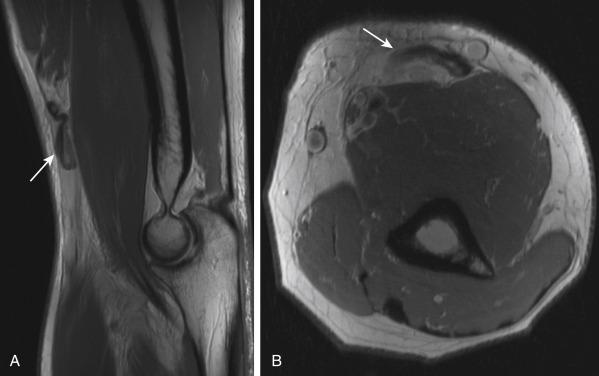Physical Address
304 North Cardinal St.
Dorchester Center, MA 02124
Anatomic repair and reconstruction of the distal biceps tendon footprint is the treatment of choice among patients who desire a return to full elbow flexion and supination strength after distal biceps rupture. Although good to excellent results are achieved in the majority of patients after distal biceps repair, the surgical complication rate varies from 16% to 26%. Careful preoperative planning may mitigate some common pitfalls of surgery. Further understanding of unanticipated complications in the intraoperative and postoperative setting are paramount to achieving a successful outcome following repair.
Early recognition of distal biceps ruptures is paramount to ensuring good outcomes and minimizing complications of surgical repair. Chronic tendon ruptures (>4 weeks) are associated with tendon retraction and fibrosis encountered at the time of repair. As a result, repair of chronic distal biceps rupture has demonstrated higher rates of complications, , including nerve injury, when compared with acute repairs.
After a patient presents with a distal biceps rupture, advanced soft-tissue imaging should be acquired urgently (ideally within 3 weeks). Magnetic resonance imaging (MRI) or ultrasound (US) is essential to determining the extent of tendon retraction and potentially the reparability of the ruptured tendon. MRI also helps to delineate the neurovascular anatomy surrounding the anatomic footprint, which may help navigate around any interfering structures encountered during the surgical approach ( Fig. 36.1 ).

Excessive tendon retraction is a difficult problem that is usually the result of delayed repair and can usually be avoided by acute management within 3 weeks of injury. Preoperative imaging studies (MRI or USS) can help delineate the degree of retraction. When operating on a patient with significant retraction more than 6 to 8 cm and/or a patient whose injury occurred more than 4 weeks from the time of surgery, we routinely consent our patients for the potential need for an allograft reconstruction/augmentation. If the needs arises in the operating room and the patient has not consented for the use of allograft, or if the patient refuses consent for the use of allograft, another option is tenodesis of the remaining biceps tendon to the brachialis. This technique may improve flexion strength but not supination strength.
Recent studies have shown that good patient satisfaction and range of motion (ROM) can be achieved even if the tendon is repaired in up to 60 degrees of flexion. If one has to flex the arm more than 60 degrees to get the tendon back to the tuberosity, failure to regain full ROM is a potential risk. Postoperatively, the elbow should be immobilized in a posterior plaster splint or in a locked brace in 90 degrees of flexion with neutral pronation-supination for the first 2 weeks, followed by an increase in elbow extension in the brace each week in 10-degree increments.
Become a Clinical Tree membership for Full access and enjoy Unlimited articles
If you are a member. Log in here